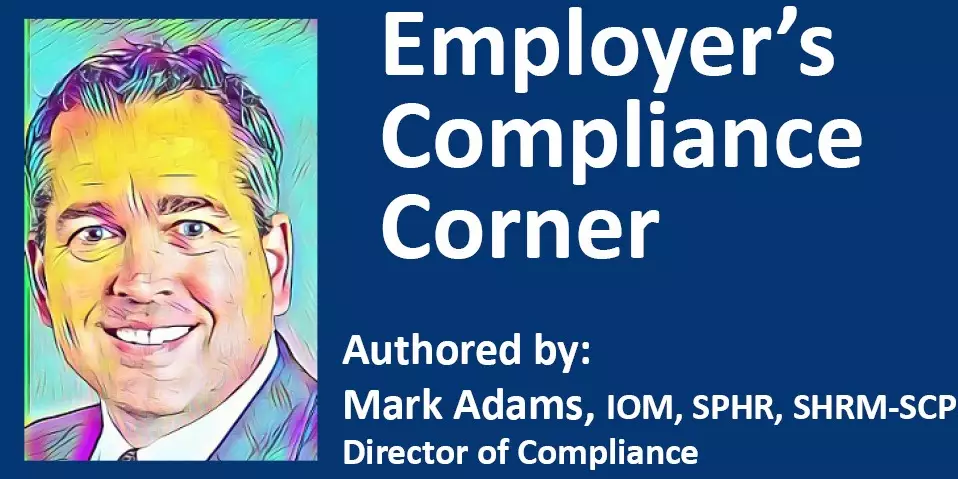Navigating the Sea of Change

If 2020 and the COVID-19 pandemic has taught us two things, it is that: A) employers and employees alike need to be both flexible and agile in order to survive, and B) that change has become “the new normal”.
Some of these changes have been driven by ever-changing federal and state laws and regulations coupled with the ebb and flow of state reopening guidelines. Others have been driven by the economic impacts of COVID, with companies furloughing or laying off employees on the one hand while reducing hours and pay of retained workers, only to then bring people back to achieve PPP loan forgiveness.
For many, the spring and summer months were about riding out the storm in hopes that clearer skies lie ahead. Many (though not all) affected employees were able to do so through expanded Families First Coronavirus Response Act (FFCRA) paid leave benefits and expanded unemployment benefits provided under the CARES Act. For employees with children, these benefits provided key resources that allowed them to attend to their children (while schools were either closed or operating remotely) while being compensated to make ends meet.
But these measures were temporary. While FFCRA benefits are conceivably available for time off through the end of the year, many have already exhausted these benefits in the midst of the initial storm. What’s more, the CARES Act expanded unemployment benefits came to end on July 31st (whether these come back in some form in the future is a question left for Congress to answer).
However, with autumn fast approaching, the storm clouds are starting to gather once again on the horizon. Companies are looking to ramp up operations (to the degree allowed under state reopening guidelines) to make up lost financial ground with employees facing the corresponding pressure to step up. On the other hand, employees are also confronting work/life challenges; chief among them being re-emerging school and child care needs. According to the Bureau of Labor Statistics (BLS), over approximately 41% of the labor force between 20 and 54 years of age have at least one child at home and over 60% of those with school-age children at home reside in households where both parents work. With many school districts operating under hybrid or remote plans for the foreseeable future (either until the end of the calendar year or perhaps until next spring), employers and employees alike need to evaluate their options.
Sure FFCRA remains a consideration through the end of 2020 for those who have not exhausted that benefit already (and yes – it would apply to employees who need to stay home with a child who is doing school remotely, there is a DOL Q & A that clarifies that – see Q & A #70).
But what else is there to consider? With FFCRA maxing out at 12 weeks (unless some other legislative olive branch gets adopted), that option (even if available for some) will not be enough to get them through the school year.
What is an employer to do? Here are some options to consider
- Flexible scheduling | Does the job need to be done from 9-5? Can the work be done “off hours”? At night? Weekends?
- Job sharing | Does the job need to be full-time? Can it be split between two employees? Careful examination of job responsibilities, processes and workflow are critical for this to be a viable option.
- Job rotation or reassignment | Maybe their current job provides limited flexibility but a different position may be more accommodating. Can they step in elsewhere? How do you assess the skill sets of your workers? What are transferrable?
- Remote Work | Can essential job functions be done remotely while farming out remaining functions to others. Is that better than going without the employee at all?
- Being more flexible in how existing company vacation, personal or PTO is used.
- Intermittent personal leave | Even for employees who have exhausted their FFCRA time allotment, is an intermittent personal leave a consideration? [This may be particularly attractive for employees who are collaborating with other parents to set up their own mini-study pods for their kids and in doing so, have the capability of working some of the time but not all of the time.]
For employers with Employee Assistance Programs (EAP’s), additional services may be available such as financial counseling and stress management resources that may provide valuable tools for employees who are having to consider and manage the alternative paths that they may have to pursue. If you have an EAP, see if these services are a part of your program and make sure your employees are aware of them.
The subject of schooling in 2020 is a complex one that will require creativity and customized planning to maintain the key talent within an organization. Charting the course now can help navigate the stormy seas later.
Thank you for viewing the 1st article in EANE’s Employer’s Compliance Corner Blog, Authored by our Director of Compliance, Mark Adams. Please visit again soon to stay up to date on today’s compliance updates and best practices for employers.